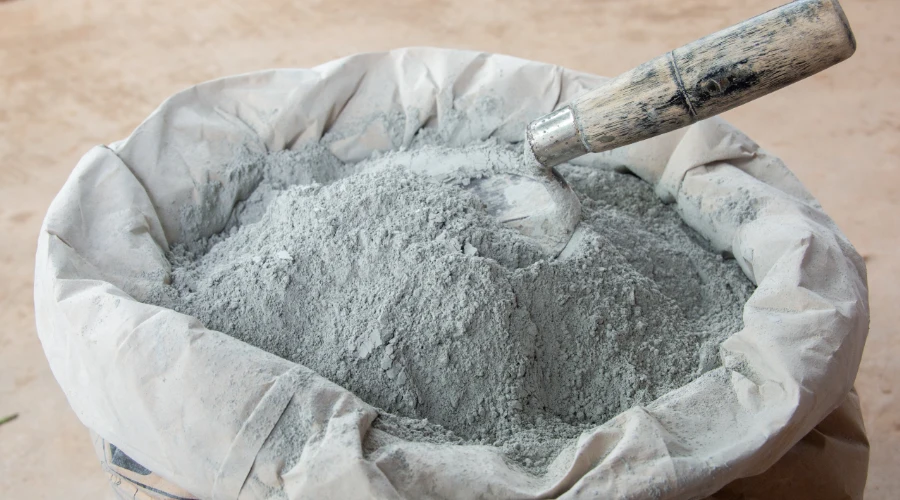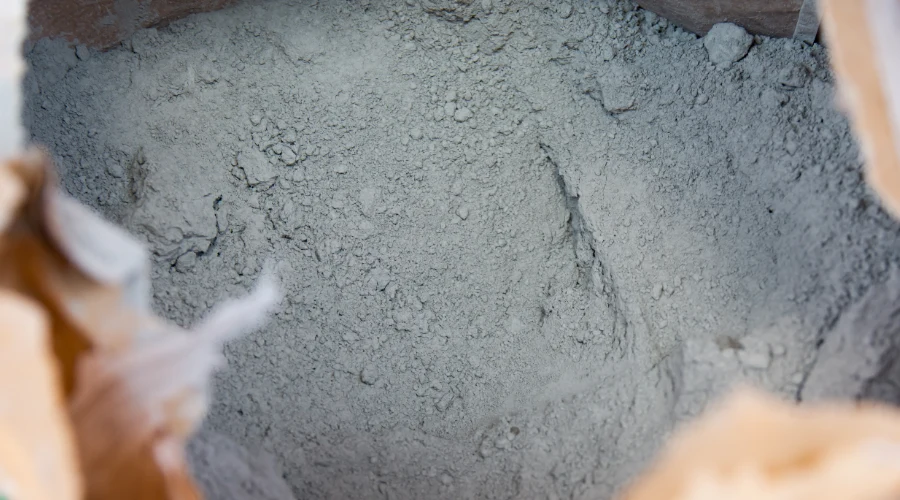Cement is a component of concrete that is an indispensable construction material. Limestone and clay from quarries are processed to make cement. Portland cement is the most often used cement in buildings. Depending on your construction demands, Portland cement comes in a variety of forms, and the most common form is Portland Pozzolana Cement. This blog mainly states the uses of PPC, mainly about its benefits and application to various construction settings. But before we start, let’s understand what PPC is, its composition and the manufacturing process.
What is PPC cement ?
Portland Pozzolana Cement (PPC) is a type of blended cement. It is manufactured by mixing ordinary Portland cement and pozzolanic materials in a certain ratio. Normally, the mixing ratio varies from 15% to 35%. Pozzolanic materials are commonly powdered silica or alumina. They are in a finely divided form. In moisture, they will react with calcium hydroxide and produce compounds that have cement properties at room temperature. The primary pozzolanic materials used in the production of PPC are silica fumes, fly ash, and volcanic ashes.

Composition and Manufacturing Process of PPC
The chemical composition of PPC is normally as follows:
- 20% to 35% of Silicon Dioxide,
- 5% to 15% of Aluminium Oxide,
- 1% to 10% of Iron Oxide,
- 30% to 40% of Calcium Oxide,
- 0.1% to 4% of Magnesium Oxide and
- 1% to 3% of Sulphur Trioxide.
Portland pozzolana cement is produced by blending and grinding clinkers of Portland cement, gypsum, and other pozzolanic materials. The process is similar to the production of ordinary Portland cement. It involves four stages, namely:
Crushing of Raw Materials:
Limestone and clay are crushed to reduce particle size and pre-homogenized.
Raw Material Grinding:
The fine particles are grounded, mixed, and homogenized in silos.
Clinker Calcination:
The raw mix obtained from grinding is calcined in a rotary kiln. This forms a clinker.
Cement Grinding:
The clinker is cooled. Then they are mixed and ground with pozzolanic materials and gypsum in a cement mill. At last, they are stored in silos and packaged.
Uses of Portland Pozzolana Cement

The Portland Pozzolana Cement is used in different applications. Some of the applications are as,
Hydraulic Structures Constructions
Dams:
Portland pozzolana cements are mainly suitable for dams. This is due to their low heat of hydration. This helps in reducing the risk of thermal cracking in mass concrete structures.
An example of this application is Sardar Sarovar Dam construction in India. Here, PPC was used to reduce heat generation and thermal stress.
Canals and Sewage Treatment Plants:
Portland pozzolana cements have improved resistance and durability for the sulfate attack. So they can be a good choice for structures in constructions that are in contact with water. The Portland pozzolana cements have shown high sulfate resistance. They have an expansion rate of less than 0.1%, compared to 0.2% in OPC concrete.
Marine Structures
Ports and Harbors:
Portland pozzolana cement is mostly preferred in marine construction as it is resistant to chloride ion penetration. This is important for structures exposed to marine water. An example of this application is the Port of Chennai. The PPC has been used in the construction of new berths, this is mainly for the improvement of the construction structure’s life span.
Offshore Platforms:
The durability of PPC in an aggressive environment makes it suitable for offshore platforms, as they will be exposed to saline water.
Mass Concrete Works
Foundations and Piles:
PPCs can be used in foundations and piles as they have properties that reduce the risk of cracking and low heat of hydration. They can be used in large concrete pours. The construction of Burj Khalifa’s foundation used PPC. This is mainly used for the management of thermal stress.
Raft Foundations:
Raft foundations have used PPC for minimal thermal gradients and durability. They are used in projects like the Shanghai Tower.
Buildings and Structural Concrete
High-Rise Buildings:
PPCs are used for high-rise buildings, as they have improved workability and chemical attack resistance. They have been used in the Petronas Towers constructions. This helped in achieving a durable concrete structure with minimal requirements for construction.
Residential and Commercial Complexes:
PPC has a superior finish and decreased permeability along with the strength., so it is preferred for commercial buildings. This helps in the sustainability of construction, mainly due to the use of by-products of industries like fly ash.
Transportation Infrastructure
Roads and Highways:
For roads and highways, PPC can be used for its durability and reduced maintenance. One best example is the Delhi-Mumbai Expressway project. It employs PPC for its concrete pavements to ensure longevity and cost-effectiveness.
Airports:
The high strength and durability of PPC make it suitable for airport constructions like runways and taxiways. Indira Gandhi International Airport in New Delhi has used PPC for its expansion. This helps in improving the concrete surface lifespan.
Advantages of PPC cement:
- Improved Durability: PPC shows improved resistance to any chemical attacks like chlorides and sulfates. This is due to the reaction of pozzolana, which decreases the permeability and porosity of concrete.
- Lower Heat of Hydration: Lower heat of hydration is one of the properties of PPC. It helps in reducing the thermal tracing in large concrete structures. This makes it ideal for words related to mass concreting works.
- Improved Workability: The fine particles in PPC help in improving the workability of the concrete. This helps involve easier placement and compaction.
- Sustainability: By-products like fly ash can help in the maintenance of sustainability. As it can reduce the carbon footprinting of cement production.
- Cost-Effectiveness: PPC is more economical than ordinary Portland cement. As PPC uses locally available materials. They have the potential to decrease the cement consumption in mixes.
Why choose PPC?
The comprehensive strength of PPC is the same as ordinary Portland cement. However, the pozzolanic reaction improves its long-term strength. The concrete made by PPC has a low water permeability of 20% to 30% compared to ordinary Portland cement. This is because of its high durability. PPC also shows a higher resistance to sulfate attack, over 50%,compared to ordinary Portland cement concrete.
Conclusion
PPCs have various applications in construction. Ranging from hydraulic structures and marine environments to Oil well cement manufacturing and transportation infrastructure. By using PPC, the performance and longevity of concrete structures can be improved. Additionally, sustainable construction practices can be followed. By adding PPC to construction projects, the industry can get durable, sustainable, and cost-effective solutions.
FAQs
Yes, PPC is ideal for large concrete pours due to their low heat of hydration. They help in reducing the risk of thermal cracking.
PPCs are used in hydraulic structures like dams, canals, and sewage treatment plants.
PPC shows over 50% higher resistance to sulfate attack when compared to OPC concrete.
Gypsum is added to control the setting time and improve the workability of PPC.

